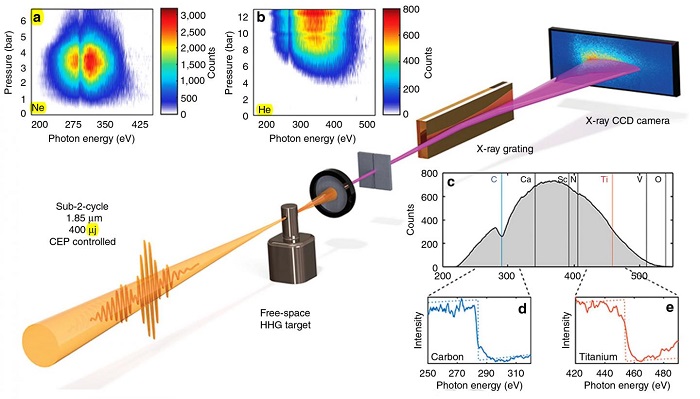11 May 2016
Attosecond light pulses in the extreme ultraviolet have drawn a great deal of attention due to their ability to interrogate electronic dynamics in real time. Nevertheless, to follow charge dynamics and excitations in materials, element selectivity is a prerequisite, which demands such pulses in the soft X-ray region, above 200 eV, to simultaneously cover several fundamental absorption edges of the constituents of the materials.
In a recent study published in Nature Communications, ICFO researchers S. M. Teichmann, F. Silva, S. L. Cousin and M. Hemmer from the Attoscience and Ultrafast Optics Group, led by ICREA Professor at ICFO Jens Biegert, have achieved isolated attosecond pulses covering the carbon, nitrogen and oxygen absorption edges simultaneously in the soft X-ray water window. This study provides site-specific probes for observing electron correlation and many-body effects of core-excited atoms or electron transfer in photo- and electro-chemical processes of organic solar cells and molecular electronics. The wavelength of 2 nm and their penetration depth permit coherent transmissive, reflective and ptychographic diffractive imaging to resolve structural dynamics of biomolecules at high resolution and fast timescales.
The work opens new opportunities by bridging the gap between ultrafast time resolution and element specific probing, towards elucidating the entire dynamics of the building blocks of biological life, within organic semiconductors, light harvesting devices and even for molecular electronics.

0.5 keV Soft X-ray Attosecond Continua in Nature Communications
ICFO researchers have demonstrated attosecond temporal resolution in combination with atomic selectivity.

Experimental setup showing pressure dependence and spectral coverage. CREDIT: ICFO













